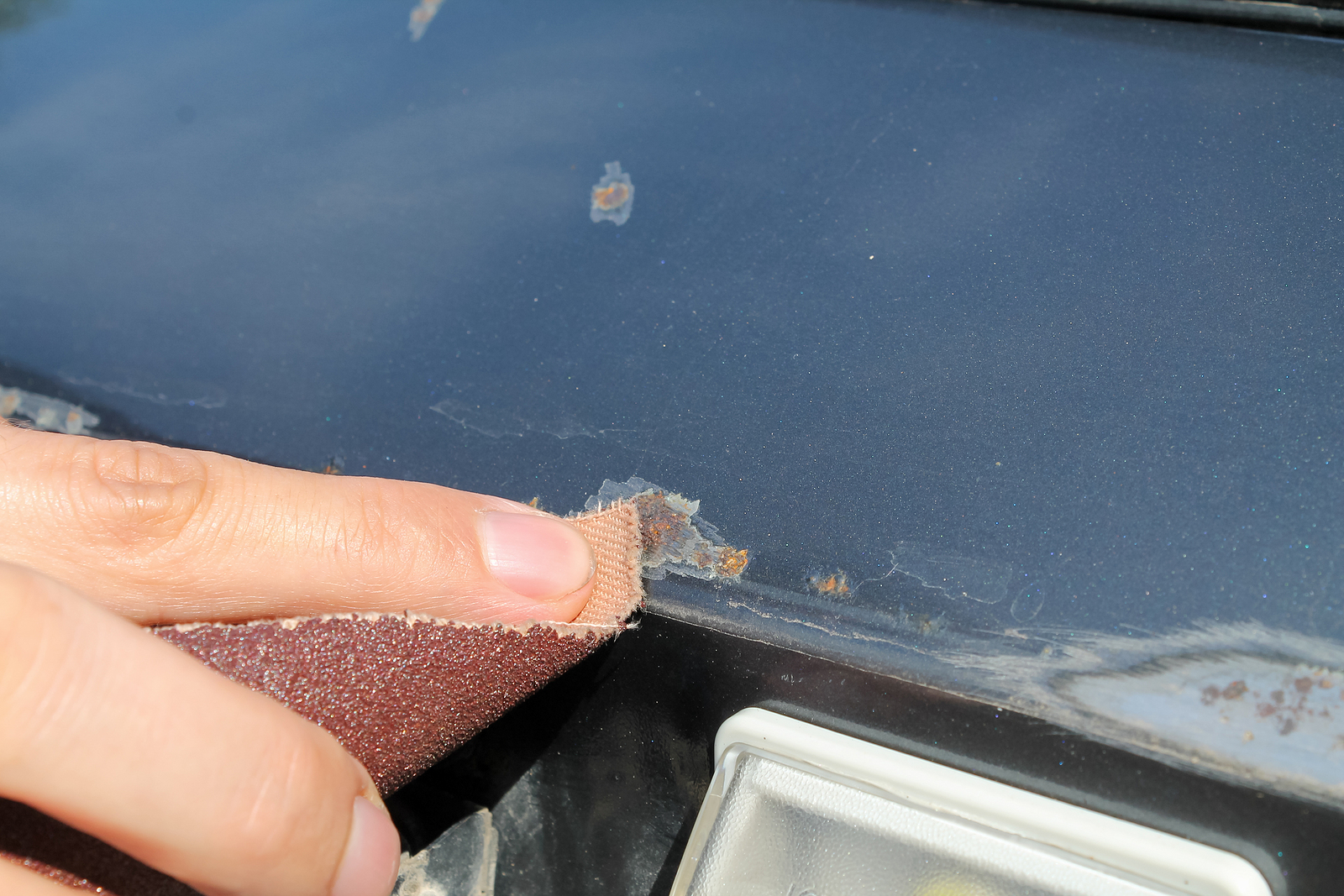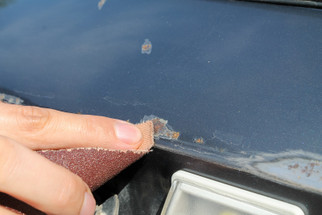Posted by Sandpaper America on Dec 17th 2021
How to Sand Off a Scratch on Your Car
Whether your teenager had a hiccup learning how to back out of the driveway, or a rogue shopping car happened to target your car door during a recent grocery trip, car scratches are quite frustrating to deal with. As one of the most common minor vehicular damages, they not only diminish the aesthetics of a vehicle, but they also reduce the resale value as well. The worst part is, these minor repairs can cost an upwards of $400 or more at the dealership, which means most of us choose to live with our blemished automotive paint.
However, if you are a handy person, it may be possible for you to repair a car scratch on your own, and for much cheaper than what the dealership or auto shop will charge. All you need is a little cash, some supplies, and experience using sanding and buffing tools.
Continue reading for a quick guide to sanding off surface scratches in automotive paint.

Supplies Needed to Remove a Car Scratch
Everything you need for this project can be found at any local home improvement or hardware store. Be sure you know how to use the tools necessary for this project in order to produce the best results. If you do not know how to properly buff and sand, you can risk damaging your vehicle even more. As for supplies, this is a list of mandatory and optional items to get:
- 200 Grit Wet Dry Sandpaper
- Automotive Rubbing Compound (Clear Coat-Safe)
- Prep Solvent
- Microfiber Rags
- Dual Action Sander/Polisher
- Applicator Pads
- Car Polish
- Car Wax
- Small Bowl
- Warm Water
Quick Guide to Repairing a Car Scratch
Start by washing your car. Take it to a car wash or wash it manually.
Apply the prep solvent once your car is clean and dry.
Submerge your 200 grit wet dry sandpaper in cold water and let it sit for 10 minutes. This type and grade of sandpaper is specially manufactured to be safe for sanding clear coats. However, if there is residual paint on the sandpaper after sanding, you are sanding off too much clear coat.
After your sandpaper soaks fir 20 minutes, spray the scratch with a lot of water, and then begin sanding it gently. You may need to repeat this step a few times before it the scratch goes away, depending on the severity. Check the sanded area for smoothness between each round but be very careful not to sand off too much clear coat.
Once the scratch is gone, the surface of the car should appear dull. Do not worry, this is normal. Continue by applying a small amount of your automotive rubbing compound to your buffing applicator pad.
Set your power sander at 1,800 RPM. Buff the dull area with your rubbing compound until it looks shiny. Be sure you keep your power sander moving in even strokes at all times to prevent paint burn. Finish by wiping away residual product with microfiber towels. You may need to repeat this step a few times for best results.
After you have finished buffing, set your power sander at 1,000 RPM. Then apply your car polish to a clean applicator pad and buff the work area until it the clear coat is glossy.
Your last step is to wax your car according to manufacturer directions. You will need some more microfiber towels for this part.
Now your car should be scratch-free!
Are you looking for quality abrasives you can afford? Call Sandpaper America at 1-800-860-SAND to buy quality abrasives like belts, sanding sheets, cloth rolls, and more. We offer the most competitive prices for abrasives and convenient online ordering across the nation!
Related Posts:
The
Correct Sandpaper Grits for Sanding Car Paint
Facts
About Speed Squares
Important
Sandpaper FAQS You Want to Know


